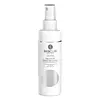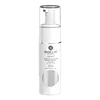What's inside
What's inside
 Key Ingredients
Key Ingredients

 Benefits
Benefits

 Concerns
Concerns

No concerns
 Ingredients Side-by-side
Ingredients Side-by-side

Water
Skin ConditioningGlycerin
HumectantHydrolyzed Glycosaminoglycans
HumectantSqualane
EmollientPolyglyceryl-6 Stearate
EmollientSerine
MaskingPentylene Glycol
Skin ConditioningJojoba Oil/Macadamia Seed Oil Esters
Skin ConditioningEctoin
Skin ConditioningCeramide AP
Skin ConditioningCeramide NP
Skin ConditioningMadecassoside
AntioxidantAsiaticoside
AntioxidantPhytosterols
Skin ConditioningPhytosteryl Macadamiate
Skin ConditioningBorago Officinalis Seed Oil
EmollientShea Butter Ethyl Esters
EmollientCentella Asiatica Leaf Extract
Skin ConditioningArginine
MaskingTocopherol
AntioxidantSqualene
EmollientPolyglyceryl-6 Behenate
Emulsion StabilisingCetearyl Alcohol
EmollientXanthan Gum
EmulsifyingHydroxyacetophenone
AntioxidantWater, Glycerin, Hydrolyzed Glycosaminoglycans, Squalane, Polyglyceryl-6 Stearate, Serine, Pentylene Glycol, Jojoba Oil/Macadamia Seed Oil Esters, Ectoin, Ceramide AP, Ceramide NP, Madecassoside, Asiaticoside, Phytosterols, Phytosteryl Macadamiate, Borago Officinalis Seed Oil, Shea Butter Ethyl Esters, Centella Asiatica Leaf Extract, Arginine, Tocopherol, Squalene, Polyglyceryl-6 Behenate, Cetearyl Alcohol, Xanthan Gum, Hydroxyacetophenone
Water
Skin ConditioningGlycerin
HumectantSodium Cocoamphoacetate
CleansingSerine
MaskingPentylene Glycol
Skin ConditioningPanthenol
Skin ConditioningEctoin
Skin ConditioningXylitylglucoside
HumectantAlpha-Glucan Oligosaccharide
CleansingAsiaticoside
AntioxidantMadecassoside
AntioxidantBeta-Glucan
Skin ConditioningAllantoin
Skin ConditioningGluconolactone
Skin ConditioningInulin
Skin ConditioningCentella Asiatica Leaf Extract
Skin ConditioningAnhydroxylitol
HumectantSodium Cocoyl Amino Acids
CleansingPersea Gratissima Oil
Skin ConditioningXylitol
HumectantFructose
HumectantCalcium Gluconate
HumectantGlucose
HumectantLactic Acid
BufferingXanthan Gum
EmulsifyingCellulose Gum
Emulsion StabilisingCellulose
AbsorbentHydrolyzed Caesalpinia Spinosa Gum
AbsorbentCaesalpinia Spinosa Gum
Skin ConditioningHydroxyacetophenone
AntioxidantSodium Benzoate
MaskingPotassium Sorbate
PreservativeWater, Glycerin, Sodium Cocoamphoacetate, Serine, Pentylene Glycol, Panthenol, Ectoin, Xylitylglucoside, Alpha-Glucan Oligosaccharide, Asiaticoside, Madecassoside, Beta-Glucan, Allantoin, Gluconolactone, Inulin, Centella Asiatica Leaf Extract, Anhydroxylitol, Sodium Cocoyl Amino Acids, Persea Gratissima Oil, Xylitol, Fructose, Calcium Gluconate, Glucose, Lactic Acid, Xanthan Gum, Cellulose Gum, Cellulose, Hydrolyzed Caesalpinia Spinosa Gum, Caesalpinia Spinosa Gum, Hydroxyacetophenone, Sodium Benzoate, Potassium Sorbate
Ingredients Explained
These ingredients are found in both products.
Ingredients higher up in an ingredient list are typically present in a larger amount.
Asiaticoside comes from the super popular skin-soothing ingredient, Centella asiatica. It is one of four active compounds found in the extract of Centella Asiatica.
Asiaticoside is an antioxidant and helps with wound healing. It has been shown to increase antioxidant activity during the wound healing process.
Centella Asiatica Leaf Extract comes from the leaves of an herb plant native to Southeast Asia. Centella Asiatica is rich in antioxidants and amino acids. It can help reduce irritation and soothe the skin.
Many active components found in centella asiatica, such as Madecassic Acid and Asiaticoside, encourage the skin to naturally produce hyaluronic acid. This helps keep our skin hydrated. Many of these components also show antioxidant activity and may help reduce the signs of aging.
Research shows centella asiatica can help increase Type I collagen production by increasing fibroblast production. Fibroblast helps form connective tissue.
The combination of all these properties makes centella asiatica leaf extract effective at soothing the skin.
Other components of centella asiatica leaf extract include Vitamin A, vitamin C, several B vitamins, and Asiatic Acid.
Recent studies found madecassoside may help prevent damage from UV rays by preventing UV-induced inflammation. Further research is needed.
This plant has been used as a medicine and in food for many centuries. As a medicine, it is used to treat burns, scratches, and wounds.
Learn more about Centella Asiatica Leaf ExtractEctoin is a compound found naturally in some species of bacteria. It can be synthetically created for skincare use.
This ingredient is an osmolyte; Osmolytes help organisms survive osmotic shock (it protects them from extreme conditions). It does this by influencing the properties of biological fluids within cells.
When applied to the skin, ectoin helps bind water molecules to protect our skin. The water forms a sort of armor for the parts of our skin cells, enzymes, proteins, and more.
Besides this, ectoin has many uses in skincare:
A study from 2004 found ectoin to counteract the damage from UV-A exposure at different cell levels. It has also been shown to protect skin against both UV-A, UV-B rays, infrared light, and visible light.
Studies show ectoin to have dual-action pollution protection: first, it protects our skin from further pollution damage. Second, it helps repair damage from pollution.
In fact, ectoin has been shown to help with:
Fun fact: In the EU, ectoin is used in inhalation medication as an anti-pollution ingredient.
Ectoin is a highly stable ingredient. It has a wide pH range of 1-9. Light, oxygen, and temperature do not affect this ingredient.
Learn more about EctoinGlycerin is already naturally found in your skin. It helps moisturize and protect your skin.
A study from 2016 found glycerin to be more effective as a humectant than AHAs and hyaluronic acid.
As a humectant, it helps the skin stay hydrated by pulling moisture to your skin. The low molecular weight of glycerin allows it to pull moisture into the deeper layers of your skin.
Hydrated skin improves your skin barrier; Your skin barrier helps protect against irritants and bacteria.
Glycerin has also been found to have antimicrobial and antiviral properties. Due to these properties, glycerin is often used in wound and burn treatments.
In cosmetics, glycerin is usually derived from plants such as soybean or palm. However, it can also be sourced from animals, such as tallow or animal fat.
This ingredient is organic, colorless, odorless, and non-toxic.
Glycerin is the name for this ingredient in American English. British English uses Glycerol/Glycerine.
Learn more about GlycerinHydroxyacetophenone is antioxidant with skin conditioning and soothing properties. It also boosts the efficiency of preservatives.
This ingredient is not irritating or sensitizing.
Madecassoside comes from the super popular skin-soothing ingredient, Centella asiatica. It is one of four active compounds found in the extract of Centella Asiatica.
Madecassoside has antioxidant, anti-inflammatory, and hydrating properties. It contains fatty acids, amino acids, beta-carotene, and phytochemicals.
One study found using Madecassoside with ascorbic acid helped reduce the signs of aging and improved skin hydration.
Learn more about MadecassosidePentylene glycol is typically used within a product to thicken it. It also adds a smooth, soft, and moisturizing feel to the product. It is naturally found in plants such as sugar beets.
The hydrophilic trait of Pentylene Glycol makes it a humectant. As a humectant, Pentylene Glycol helps draw moisture from the air to your skin. This can help keep your skin hydrated.
This property also makes Pentylene Glycol a great texture enhancer. It can also help thicken or stabilize a product.
Pentylene Glycol also acts as a mild preservative and helps to keep a product microbe-free.
Some people may experience mild eye and skin irritation from Pentylene Glycol. We always recommend speaking with a professional about using this ingredient in your routine.
Pentylene Glycol has a low molecular weight and is part of the 1,2-glycol family.
Learn more about Pentylene GlycolSerine is an amino acid naturally found in our body. Our bodies use amino acids to create protein.
Amino-acids help give keep our skin hydrated. They play an important role in the skin barrier, which keeps the skin plump and firm.
Serine is a non-essential amino acid, meaning we don't need to obtain it from eating foods.
Learn more about SerineWater. It's the most common cosmetic ingredient of all. You'll usually see it at the top of ingredient lists, meaning that it makes up the largest part of the product.
So why is it so popular? Water most often acts as a solvent - this means that it helps dissolve other ingredients into the formulation.
You'll also recognize water as that liquid we all need to stay alive. If you see this, drink a glass of water. Stay hydrated!
Learn more about WaterXanthan gum is used as a stabilizer and thickener within cosmetic products. It helps give products a sticky, thick feeling - preventing them from being too runny.
On the technical side of things, xanthan gum is a polysaccharide - a combination consisting of multiple sugar molecules bonded together.
Xanthan gum is a pretty common and great ingredient. It is a natural, non-toxic, non-irritating ingredient that is also commonly used in food products.
Learn more about Xanthan Gum